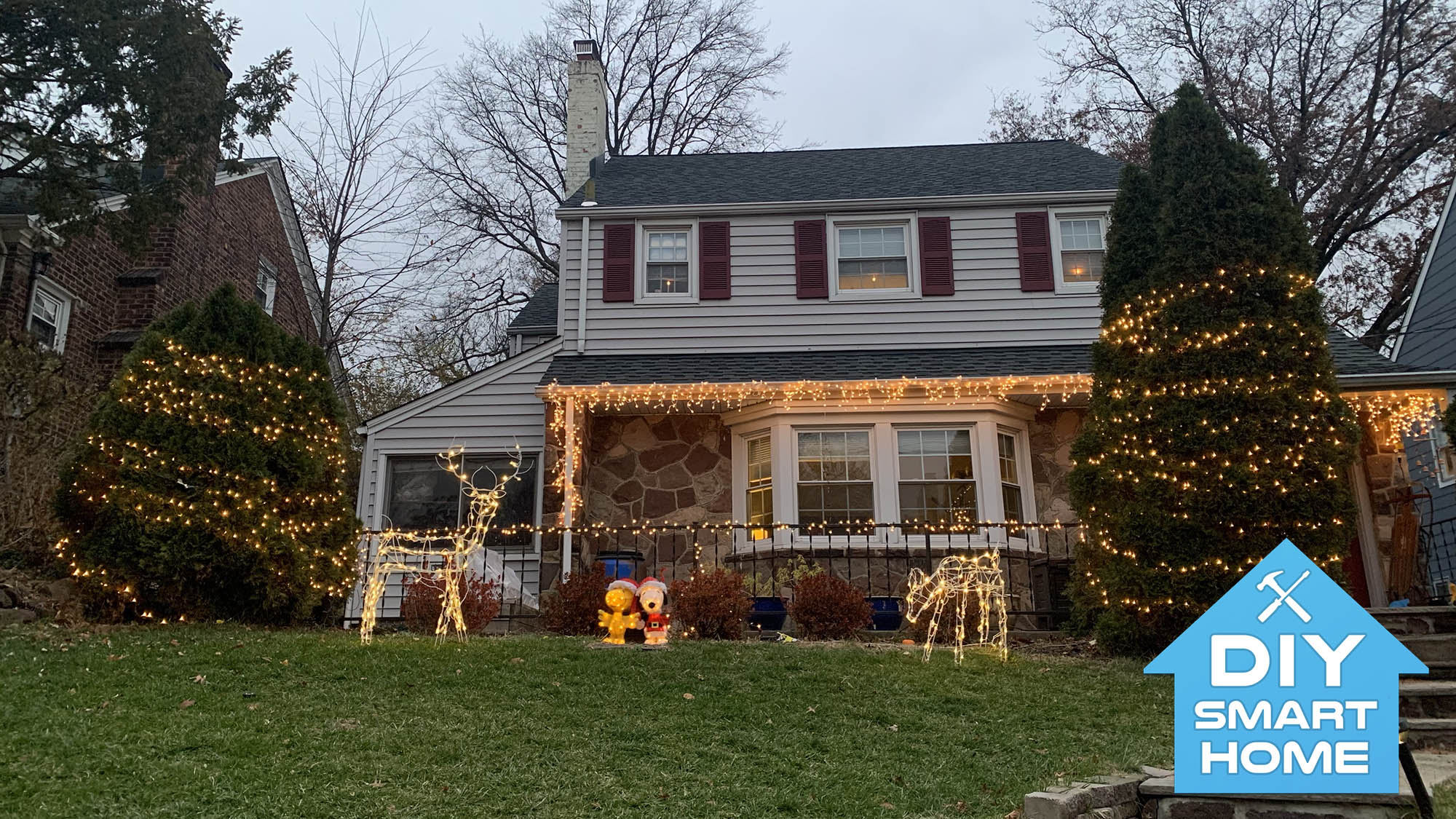I’m using these cheap smart plugs to control my Christmas lights
It’s the most wonderful time of year for this inexpensive smart home device

Every holiday season, I’ve added more and more lights to our decorations. The first year was just the Christmas tree. The year after, I put up some lights on some outdoor bushes and lights in the windows. The year after, I couldn’t pass up a deal on a Snoopy and Woodstock lighted sculpture combo. This year, I finally splurged on two illuminated deer and icicle lights.
I'm not as Griswoldian as some of my neighbors, one of whom has a yard filled with inflatables — we particularly get a kick out of Santa riding an elephant and a T-Rex holding a present — but it adds a nice festive look to our home.
I’ve also found over the years that investing in some of the best smart plugs and some of the best outdoor smart plugs, and knowing how to create an Alexa smart home routine, makes things a whole lot easier. Here’s how I set up my Christmas lights; maybe this will help you with your decorations.
Smart plugs for the holidays: what I use
Inside my house, my Christmas tree lights are connected to an old Wemo Mini smart plug; it’s not sold anymore (you can buy the Wemo WiFi Smart Plug), but it still works well. Upstairs, I have a couple of TP-Link Kasa smart plugs that I use with my window candles.
For my outdoor lights, I have a TP-Link Kasa Smart Outdoor Plug KP400 as well as the Ring Outdoor Smart Plug. In this scenario, the Ring plug acts as a splitter, but it’s a good model for Ring owners. The one thing to keep in mind is that your Wi-Fi signal needs to be strong enough to reach any outdoor smart plugs; otherwise, you may need to invest in a new router.
There’s a lot of smart plugs, both indoor and outdoor, that should suit your holiday light needs. But the one feature each should have is scheduling based on sunrise and sunset times — even better is a sunrise/sunset offset, so you can have the lights turn on and off at a set time either before or after sunset. That way, the lights don’t turn on too early when it’s still too bright outside to see them.
The plug will automatically adjust the time the lights turn on based on your local sunset, and turn them off based on your local sunrise. I set my lights to turn off around 11 p.m. to midnight, so I'm not wasting energy when no one’s going to see them.
Smart plugs for the holidays: Where Alexa fits in
If you don’t want to go through the trouble of setting schedules for separate smart plugs, an Alexa or Google Home routine can make life a lot easier. Using Alexa as an example, I first created a group in the Alexa app of all of my Christmas-related lights. I then set up a routine to turn all of my lights on 15 minutes before sunset, and then a second routine to turn them all off at 11:30 pm.
Within the Alexa app, I can also turn lights on and off individually, or I can just call out to Amazon’s voice assistant through any of the best Alexa speakers to switch things on.
Alexa and Google Home are pretty even in this regard; Google Home lets you specify specific locations you want a routine to start — helpful if you have a home in another part of the country. But the Alexa app lets you specify the brightness as well as the duration you want the lights to turn on.
I’ve found it’s also helpful to label the smart plugs themselves, and store them with your Christmas lights. It makes it a lot easier the next year to remember what goes where. Just be prepared to wait a few minutes before the smart plugs start working; if the companies have been attentive, there’s sure to be a firmware update or two. That’s a minor inconvenience for making sure your days — and nights — are merry and bright.
Sign up to get the BEST of Tom's Guide direct to your inbox.
Get instant access to breaking news, the hottest reviews, great deals and helpful tips.

Michael A. Prospero is the U.S. Editor-in-Chief for Tom’s Guide. He oversees all evergreen content and oversees the Homes, Smart Home, and Fitness/Wearables categories for the site. In his spare time, he also tests out the latest drones, electric scooters, and smart home gadgets, such as video doorbells. Before his tenure at Tom's Guide, he was the Reviews Editor for Laptop Magazine, a reporter at Fast Company, the Times of Trenton, and, many eons back, an intern at George magazine. He received his undergraduate degree from Boston College, where he worked on the campus newspaper The Heights, and then attended the Columbia University school of Journalism. When he’s not testing out the latest running watch, electric scooter, or skiing or training for a marathon, he’s probably using the latest sous vide machine, smoker, or pizza oven, to the delight — or chagrin — of his family.

